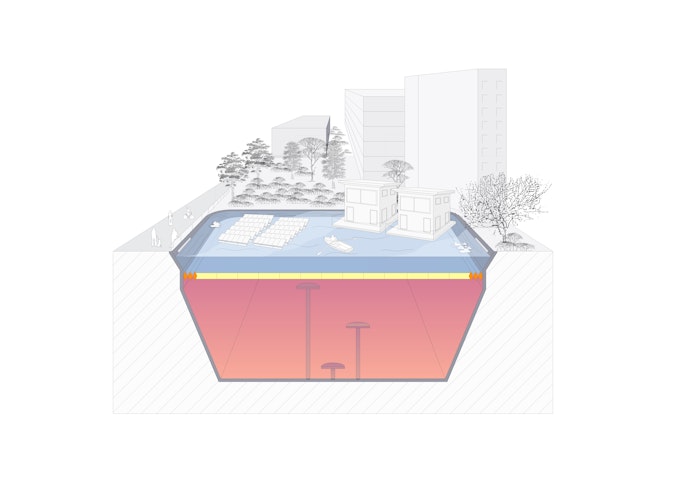Very large thermal energy storage for renewable districts
This report is part of Today in the Lab – Tomorrow in Energy?
Today in the Lab – Tomorrow in Energy? shines a spotlight on research projects under development in the Technology Collaboration Programmes (TCPs). Learn more about the initiative, read the launch commentary, or explore the TCPs.
Developing large thermal energy storage concepts with renewable heat supply in urban districts
What is the aim of this project?
The project giga_TES aims to develop very large thermal energy storage concepts for urban districts in Austria and Central Europe, with the ultimate goal a 100% renewable energy heat supply for cities. To achieve this, large underground hot water tanks and pits are required to provide multifunctional energy hubs for future district heating systems. These large thermal energy storage technologies will facilitate seasonal as well as short-term storage of a wide range of volatile energy sources, enabling the share of renewable energies to increase massively.
The volume of these storage units will need to be ten times that of current storage systems, reaching up to 2 million m³ (equivalent to 800 Olympic swimming pools). Integrating such large volumes underground in cities poses challenges in terms of construction and integration concepts as well as materials.
How would the project be explained to a high school student?
District heating systems distribute heat from a central source – like a boiler or power plant – through a network of insulated pipes to heat residential and commercial buildings. Systems that are supplied entirely on renewable energy sources require large storage systems to contain the volumes of renewable heat and waste heat over a whole season.
Large-scale storage offers huge potential to help reduce greenhouse gas emissions by providing renewable heat at affordable prices all year round. It has two significant advantages: first, it can store renewable energy that is dependent on the weather, such as solar heat, so that it can be retrieved when demand for heat is high. Second, it is potentially the cheapest way to store such large amounts of heat.
The giga_TES project aims to make such large-scale storage possible by developing new construction techniques and long-lasting, water-tight materials that can cope with the volumes and high temperatures involved. The project is also focusing on how to fit a huge water tank into a city. Some ideas include using the top of it for sports fields or solar power plants.
How does the project help to achieve climate and energy goals?
- Flexible seasonal and short-term storage of various volatile energy sources could massively increase the share of renewable energy sources available for district heating systems.
- This could be the cheapest way to store large amounts of renewable energy.
- Such storage could be integrated attractively into urban environments by providing underground storage with usable surfaces.
What government policies could advance this project?
- Imposing CO2 taxes on fossil fuels to increase the profitability of this emerging technology.
- Providing targeted subsidies for demonstration and pilot projects.
- Providing funding for sustainable market uptake and broad implementation of large-scale thermal energy storages.

Possible subsurface integration of large-scale thermal energy storage in urban districts with multiple surface utilisation options. Source: AEE INTEC.
Partners and funders
Partners
AEE INTEC, Austria, leads a consortium of 18 multidisciplinary parties from universities, research institutes, engineering consultancies, construction companies, material suppliers and utilities.
Funders
Austrian Climate and Energy Fund
Expected project duration
January 2018 – June 2021
Learn more
About the Energy Storage TCP
Established in 1978, the Energy Storage TCP facilitates research, development, implementation and integration of energy storage technologies to optimise the energy efficiency of all kinds of energy systems and enable the increasing use of renewable energy. The Energy Storage TCP enables high-level co-ordination in research, development, dissemination and market deployment of energy storage solutions.